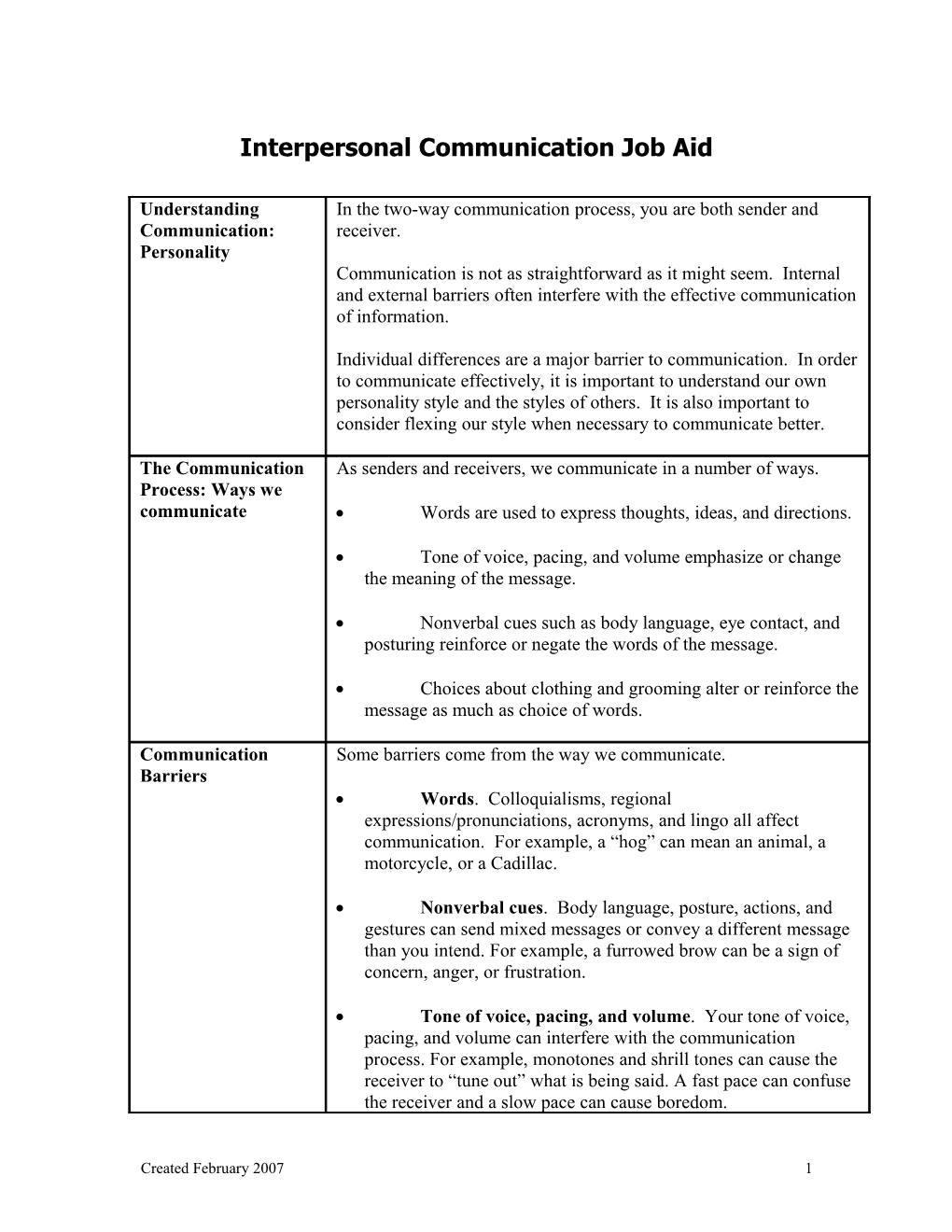Interpersonal Communication Job Aid
Understanding Communication: Personality / In the two-way communication process, you are both sender and receiver.Communication is not as straightforward as it might seem. Internal and external barriers often interfere with the effective communication of information.
Individual differences are a major barrier to communication. In order to communicate effectively, it is important to understand our own personality style and the styles of others. It is also important to consider flexing our style when necessary to communicate better.
The Communication Process: Ways we communicate / As senders and receivers, we communicate in a number of ways.
- Words are used to express thoughts, ideas, and directions.
- Tone of voice, pacing, and volume emphasize or change the meaning of the message.
- Nonverbal cues such as body language, eye contact, and posturing reinforce or negate the words of the message.
- Choices about clothing and grooming alter or reinforce the message as much as choice of words.
Communication Barriers / Some barriers come from the way we communicate.
- Words. Colloquialisms, regional expressions/pronunciations, acronyms, and lingo all affect communication. For example, a “hog” can mean an animal, a motorcycle, or a Cadillac.
- Nonverbal cues. Body language, posture, actions, and gestures can send mixed messages or convey a different message than you intend. For example, a furrowed brow can be a sign of concern, anger, or frustration.
- Tone of voice, pacing, and volume. Your tone of voice, pacing, and volume can interfere with the communication process. For example, monotones and shrill tones can cause the receiver to “tune out” what is being said. A fast pace can confuse the receiver and a slow pace can cause boredom.
Interpersonal Communication Job Aid (continued)
Communication: Internal Barriers / There are also barriers that come from inside the sender or the receiver.- Preconceived notions/stereotyping. Preconceived notions are expectations we have of others because of their job roles, gender, ethnic background, etc. These expectations are similar to stereotyping. Stereotyping is implicit in statements such as, “All teenagers are . . .”
- Self-concept. If you think you are good at communicating, it may be hard for you to hear messages to the contrary. On the other hand, if you are insecure, you may be overly sensitive to criticism.
- Emotion. When you are angry, you distort communication to get more ammunition for your point of view.
- Individual differences. Certain personality styles determine how we act in a situation. Since no two people are exactly alike, their differences can lead to miscommunication.
Created February 20071
